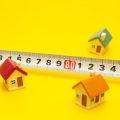1. Understanding Your Financial Picture
Before you start house hunting, it’s important to take a good look at your financial situation. Knowing how much house you can really afford starts with understanding your income, debts, and credit score. These three factors play a major role in determining your home buying power.
Your Income: The Foundation of Affordability
Your gross monthly income (before taxes) is the base number lenders use to figure out how much mortgage you can handle. This includes salary, bonuses, freelance income, and any other regular earnings. The higher your income, the more likely you’ll qualify for a larger loan—but only if your debts are under control.
Your Debts: Why They Matter
Lenders look at how much debt you already have to make sure youre not overextended. Common debts include student loans, car payments, credit cards, and personal loans. To evaluate this, lenders calculate something called the Debt-to-Income (DTI) ratio.
How to Calculate Your DTI Ratio
The DTI ratio compares your total monthly debt payments to your gross monthly income. Heres a simple formula:
| Step | Description |
|---|---|
| 1 | Add up all your monthly debt payments (e.g., car loan, credit cards, student loans) |
| 2 | Divide that total by your gross monthly income |
| 3 | Multiply the result by 100 to get a percentage |
Example:
If your total monthly debt is $1,500 and your gross monthly income is $5,000:
$1,500 ÷ $5,000 = 0.30 → Your DTI is 30%
Lenders generally prefer a DTI of 36% or lower for conventional loans, though some may allow up to 43% depending on other factors.
Your Credit Score: A Key Player in Loan Approval
Your credit score tells lenders how responsible you are with borrowing and repaying money. A higher score can help you qualify for better mortgage rates and terms. Here’s a quick breakdown of credit score ranges:
| Credit Score Range | Status |
|---|---|
| 760–850 | Excellent – Best interest rates available |
| 700–759 | Good – Qualifies for most loans |
| 650–699 | Fair – May face higher interest rates |
| 600–649 | Poor – Limited loan options available |
| Below 600 | Very Poor – Likely to be denied or need subprime loans |
A Quick Self-Check Before You Start Shopping
If youre thinking about buying a home soon, ask yourself these key questions:
- What is my current gross monthly income?
- How much do I owe each month in debts?
- What’s my DTI ratio?
- Do I know my current credit score?
- If I needed to show proof of stable income and savings today—could I?
The answers will help you understand where you stand financially and what steps you might need to take before applying for a mortgage.
2. Estimating a Realistic Home Buying Budget
Before you start browsing listings or attending open houses, it’s crucial to understand how much home you can truly afford. Creating a realistic budget will help you avoid financial stress down the road and ensure your dream home doesn’t turn into a nightmare.
Key Elements of a Home Buying Budget
Your total home buying budget includes more than just the sticker price of the house. Here are the essential components:
Down Payment
This is the upfront amount you pay when purchasing a home. Most lenders require at least 3% to 20% of the purchase price as a down payment. A larger down payment can lower your monthly payments and potentially eliminate private mortgage insurance (PMI).
Monthly Mortgage Payments
Your mortgage payment typically includes:
- Principal: The amount borrowed
- Interest: The cost of borrowing money
The exact payment depends on your loan amount, interest rate, and loan term (usually 15 or 30 years).
Property Taxes
These are local government taxes based on your homes assessed value. Property tax rates vary by state and county but are usually paid monthly as part of your mortgage escrow account.
Homeowners Insurance
This protects your home against damage or loss from events like fire, theft, or natural disasters. It’s usually required by lenders and paid monthly through escrow.
Sample Monthly Budget Breakdown
| Budget Item | Estimated Monthly Cost |
|---|---|
| Mortgage (Principal + Interest) | $1,500 |
| Property Taxes | $300 |
| Homeowners Insurance | $100 |
| Total Estimated Monthly Housing Cost | $1,900 |
Using Online Mortgage Calculators
A great way to estimate what you can afford is by using online mortgage calculators. These tools help you plug in different variables like income, debts, interest rates, and down payment amounts to see how they affect your maximum home price.
Here’s what you’ll need:
- Your gross monthly income
- Your monthly debts (like car loans, student loans, credit cards)
- Your estimated down payment
- The expected interest rate and loan term
A general rule of thumb: Your total monthly housing expenses should not exceed 28% to 31% of your gross monthly income.
This budgeting step ensures youre financially prepared for homeownership and can confidently move forward with house hunting within your means.
![]()
3. Factoring in Hidden and Ongoing Costs
When youre budgeting for your first home, it’s easy to focus only on the purchase price and monthly mortgage payment. But owning a home comes with a range of hidden and ongoing costs that can catch you off guard if youre not prepared. These extra expenses can add up fast, so its important to understand them upfront and factor them into your overall budget.
Hidden Costs at the Time of Purchase
Even before you move in, there are several one-time fees youll need to cover. These are often called “closing costs” and can include:
| Expense | Description |
|---|---|
| Closing Costs | Lender fees, title insurance, appraisal fees, and escrow charges. Typically 2%–5% of the homes purchase price. |
| Home Inspection | A professional inspection to identify issues with the property. Usually $300–$500. |
| Moving Expenses | The cost of hiring movers or renting a truck. Can range from $500 to $2,000 depending on distance and services. |
Ongoing Monthly and Annual Expenses
Once you’re a homeowner, your monthly housing budget will include more than just your mortgage. Here are some recurring expenses you should plan for:
| Ongoing Cost | Description |
|---|---|
| Property Taxes | Taxes vary by location but can be thousands annually. Often rolled into your mortgage payment. |
| Homeowners Insurance | Covers damage to your home and personal belongings. Typically $1,000–$1,500 per year. |
| HOA Fees | If your home is in a community with a homeowners association, expect monthly or annual fees for maintenance and amenities. |
| Utilities | This includes electricity, water, gas, trash service, internet, and more. Monthly cost varies by region and usage. |
The Cost of Maintenance and Repairs
Your home will need regular upkeep to stay in good shape. Experts recommend setting aside 1%–2% of your home’s value each year for maintenance. Common repairs might include:
- Roof repair or replacement
- A/C or furnace servicing
- Pest control treatments
- Lawn care or landscaping
A Simple Rule of Thumb: The 28/36 Rule Isn’t Enough
The 28/36 rule says you shouldnt spend more than 28% of your gross income on housing costs and no more than 36% on total debt payments—but that doesnt account for all these extras. Make sure to build in a cushion when calculating what you can truly afford so these hidden costs don’t become financial stressors down the road.
You’ll thank yourself later for planning ahead now!
4. Loan Options and Pre-Approval Process
Before you start house hunting, its crucial to understand the types of mortgage loans available and how getting pre-approved can give you an edge in today’s competitive housing market.
Understanding Different Mortgage Types
There’s no one-size-fits-all when it comes to home loans. Here are some of the most common mortgage options for first-time buyers:
| Loan Type | Best For | Down Payment | Credit Score Requirement | Key Features |
|---|---|---|---|---|
| FHA Loan | First-time buyers with low to moderate income | As low as 3.5% | 580 or higher (with 3.5% down) | Backed by the government, more flexible credit requirements |
| Conventional Loan | Buyers with good credit and stable income | Typically 5%–20% | 620 or higher | No upfront mortgage insurance if putting down 20% or more |
| VA Loan | Eligible veterans, active military, and their families | 0% (no down payment required) | No minimum set by VA, but lenders may require 620+ | No private mortgage insurance (PMI), competitive rates |
The Power of Pre-Approval
A mortgage pre-approval is a letter from a lender stating how much theyre willing to lend you based on your financial profile. Getting pre-approved has several benefits:
- Know Your Budget: Helps you understand what price range you can shop in.
- Saves Time: Focuses your home search on properties within your budget.
- Makes You Competitive: Shows sellers you’re a serious buyer, which can be a big advantage in hot markets.
Pre-Approval vs. Pre-Qualification
Pre-Qualification: A basic estimate based on self-reported information. It’s quick but less reliable.
Pre-Approval: A deeper dive into your finances where the lender verifies your income, credit score, and debt. This carries more weight with sellers.
What Youll Need for Pre-Approval
- Proof of income (pay stubs, tax returns)
- Proof of assets (bank statements)
- Good credit history
- ID and Social Security number
- Employment verification
Selecting the right loan type and getting pre-approved early on sets the foundation for a smoother home buying experience.
5. Aligning Your Budget with Market Realities
Even if you’ve crunched the numbers and come up with a solid homebuying budget, it’s important to make sure your expectations match what’s actually available in your target market. Real estate prices vary widely depending on location, demand, and inventory. Here’s how to align your budget with the current housing market so you can shop smart—and avoid disappointment.
Understand Local Market Trends
Before you fall in love with a dream home, take time to study the real estate trends in your desired area. Ask yourself:
- What is the average home price in this neighborhood?
- Is inventory tight or are there plenty of listings?
- Are homes selling above or below asking price?
- How quickly are homes going under contract?
You can find this information through online real estate platforms like Zillow, Redfin, or Realtor.com. You can also talk to a local real estate agent who understands the nuances of your preferred area.
Compare Your Budget to Local Home Prices
Once you have a sense of local pricing, compare it directly to your budget. Here’s an example of what that might look like:
| City/Neighborhood | Average Listing Price | Your Max Budget | Affordability Status |
|---|---|---|---|
| Austin, TX (Downtown) | $650,000 | $500,000 | Over Budget |
| Austin, TX (Suburbs) | $450,000 | $500,000 | Within Budget |
| Sacramento, CA (Midtown) | $520,000 | $500,000 | Slightly Over Budget |
Adjust Expectations Based on Market Conditions
If your ideal neighborhood consistently exceeds your budget, consider adjusting one or more of the following:
- Location: Look at nearby suburbs or up-and-coming areas where prices may be lower.
- Size: Consider downsizing from a three-bedroom to a two-bedroom home.
- Features: Be flexible on things like finished basements or large yards if they push the price too high.
Tip:
If youre buying in a sellers market—where there are more buyers than homes—be prepared for bidding wars and possibly paying above asking price. In that case, make sure to leave room in your budget for negotiation wiggle room.
The Bottom Line: Be Flexible and Realistic
Your dream home may need to evolve based on what’s realistic in today’s market. By staying informed about local trends and being willing to adjust your expectations, youll put yourself in a better position to find a home that fits both your needs and your wallet.
6. Creating a Sustainable Long-Term Plan
Buying your first home is a big step, but it’s just one part of your overall financial journey. To make sure your new home doesn’t become a financial burden, you need to think beyond the down payment and monthly mortgage. A sustainable long-term plan will help you enjoy homeownership while staying on track with other life goals like saving for emergencies, retirement, and future housing needs.
Build a Strong Financial Foundation
Before jumping into a mortgage, make sure you have a solid foundation. This includes having an emergency fund with at least 3–6 months of living expenses. Life happens—unexpected medical bills, car repairs, or job changes can pop up anytime. Having cash set aside means you won’t have to rely on credit cards or loans during tough times.
Recommended Emergency Savings Based on Monthly Expenses
| Monthly Expenses | Minimum Emergency Fund (3 Months) | Ideal Emergency Fund (6 Months) |
|---|---|---|
| $2,500 | $7,500 | $15,000 |
| $3,500 | $10,500 | $21,000 |
| $5,000 | $15,000 | $30,000 |
Don’t Forget Retirement and Future Needs
It’s easy to put all your money toward buying a house—but don’t forget about retirement savings. Make sure youre still contributing to a 401(k), IRA, or other retirement plans. Also consider future housing needs: Will you need more space as your family grows? Will you want to move in 10 years? Planning ahead helps avoid being “house poor” and gives you flexibility down the road.
Make Sure Your Home Fits Into Your Lifestyle
Your mortgage shouldnt limit your ability to live your life. If owning the house means you can’t travel, dine out occasionally, or save for your child’s education, it might be time to reconsider the price range. A good rule of thumb: your total housing costs (mortgage, taxes, insurance) should not exceed 28–30% of your gross monthly income.
Example: Housing Budget Based on Income
| Gross Monthly Income | Max Monthly Housing Budget (30%) |
|---|---|
| $4,000 | $1,200 |
| $6,000 | $1,800 |
| $8,000 | $2,400 |
Create a Balanced Financial Strategy
A smart home purchase should support—not disrupt—your broader financial goals. Think of it like building a puzzle: each piece (your home, savings, investments) needs to fit together smoothly. Sit down and map out your short- and long-term financial priorities. Then ask yourself: does this home fit into that picture?
Quick Checklist for Long-Term Financial Health:
- ✅ Emergency fund covers at least 3 months of expenses
- ✅ Still contributing to retirement accounts regularly
- ✅ Home fits within your monthly budget comfortably
- ✅ Room in the budget for future goals and unexpected costs
- ✅ Flexible enough for lifestyle changes or family growth
A home should add stability to your life—not stress. By thinking ahead and planning carefully now, you’ll set yourself up for success not just as a homeowner today but as someone building wealth and security for tomorrow.


